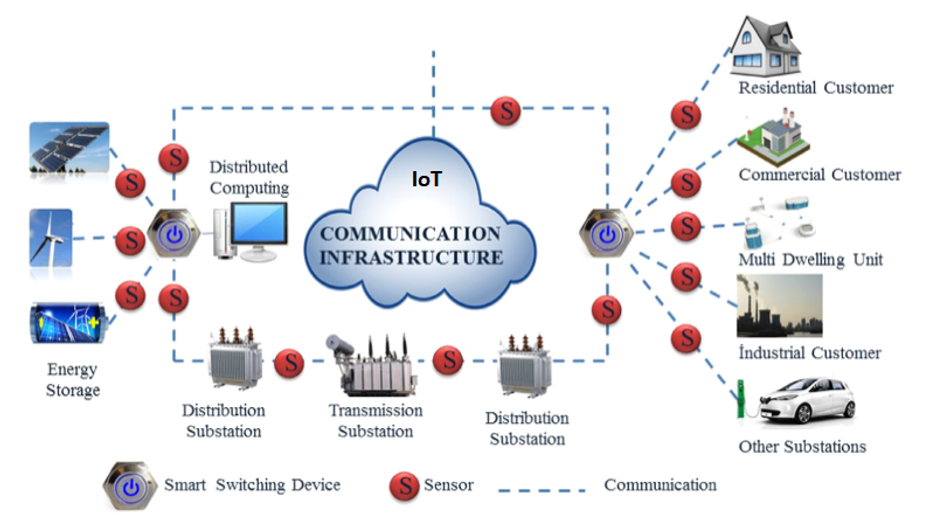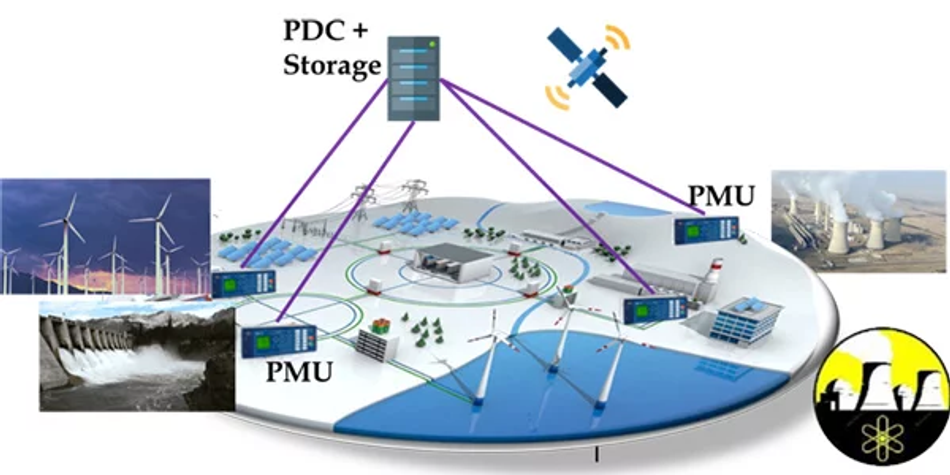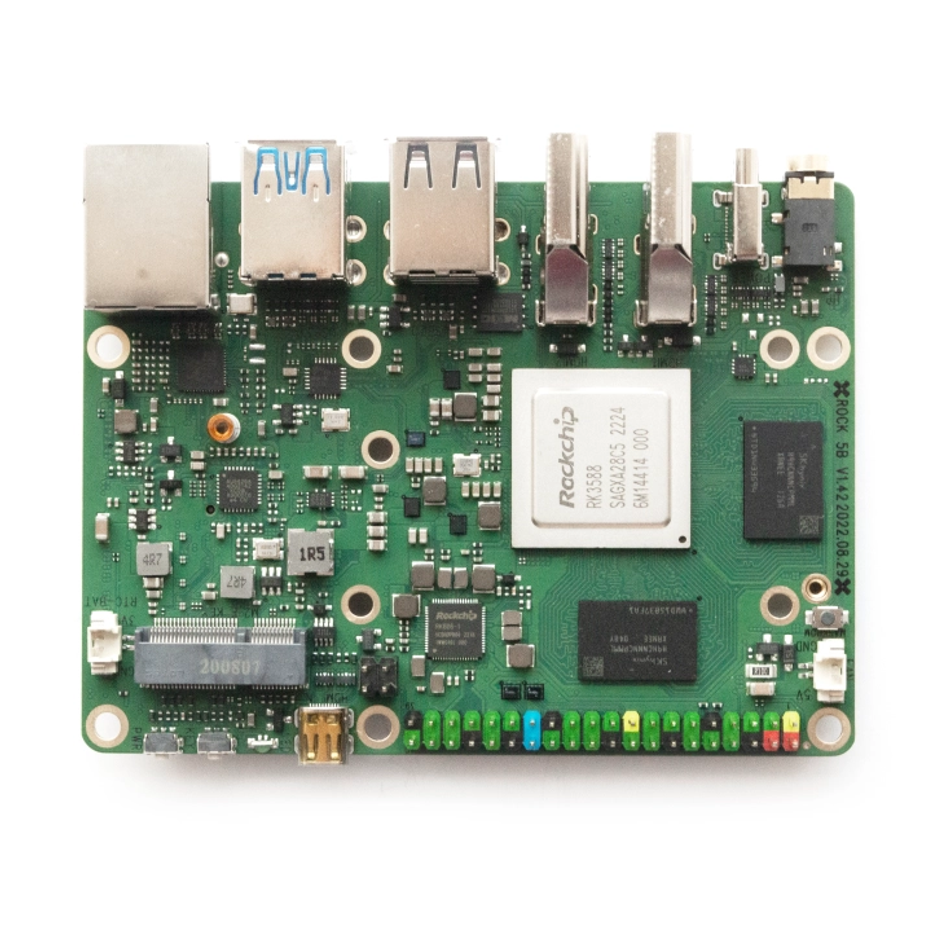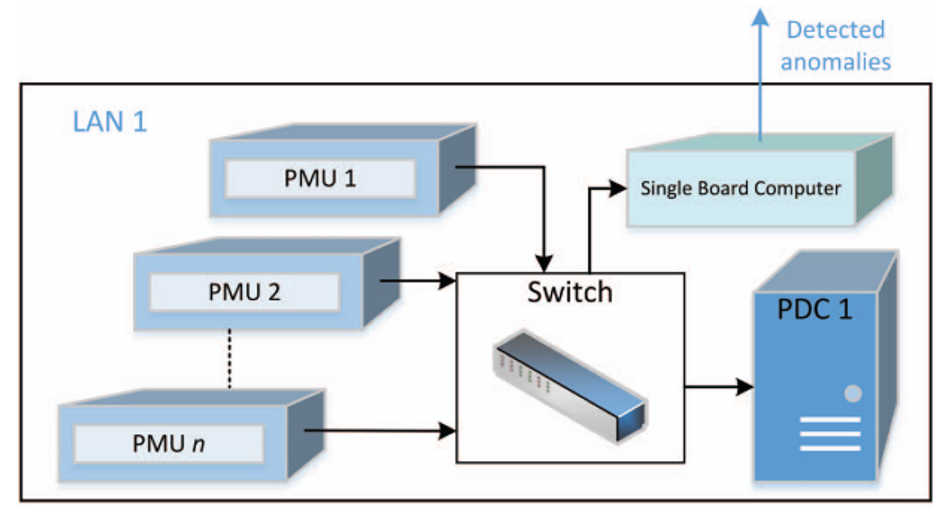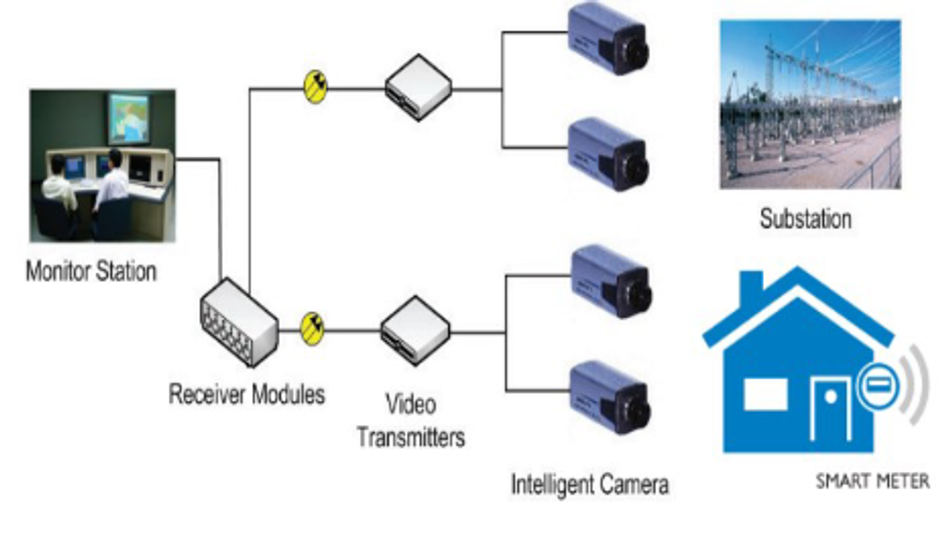Enhancing Electrical Grid Management with emerging SBC technology
Single-board computers are an increasingly attractive option to shift electricity grid management towards more advanced and less resource consuming smart grids.
Due to the need to supply power to the increasingly electrified transport and heating sectors, and the massive adoption of EVs, global electricity demand is expected to exceed 35,277 terawatt-hours by 2040 [1]. This trend, representing a growth rate of about 1.8% of electricity demand in comparison to 2020, results in the need to considerably optimise the way we produce and consume energy, and look into the options that cutting-edge innovations have to offer to enable a sustainable response to the energy challenges of the future.
From software to hardware, electricity grids need a major overhaul. However, selecting the best technologies needs to be done considering applicability, technical constraints, budget and also flexibility to adapt to incoming advances.
One answer to some of these challenges are Single Board Computers (SBCs), small functional pieces of hardware embedded into a circuit board that includes microprocessors, input/output functions, memory, and a variety of capabilities that vary according to the application and available models. An option that is increasingly attractive to engineers looking to bring the smart into the grids.
To learn about how SBCs are used in Electric Grid Management Systems or EGMS, we will briefly touch on the topic of smart grids. We will discuss some of the most important SBC advantages highlighting why SBCs are competing with some of the most prominent technologies used in grid management technologies.
Importance of Electricity Grid Management
Electricity grid management is an essential function for safe, reliable, and efficient electricity delivery worldwide. It requires monitoring and controlling various aspects of the grid, including electricity generation, transmission, and distribution, to ensure a stable and reliable electricity supply that meets demand. Effective grid management also plays a critical role in the transition towards a more sustainable and low-carbon energy future, especially with the increasing integration of renewable energy sources into the grid.
However, EGMS encounters various issues such as ageing infrastructure, capacity constraints, cybersecurity threats, integration of renewable energies, resilience to extreme weather, power outages, or even energy theft. These challenges result in consistent malfunction and breakdown in EGMS, despite the introduction of advanced technologies.
From monolithic EGMS to Smart Grids
Conventional EGMS have been the backbone of our energy infrastructure for many years, providing power to homes, businesses, and industries alike. However, with the rapid growth of renewable energy sources and the need to reduce carbon emissions, conventional grids are facing new challenges and limitations. This has led to a shift towards smart grids, which offer a range of benefits over conventional grids.
Traditionally, a conventional electricity grid requires more manual processes and human intervention which is prone to higher risks and failure due to human error. A regular grid is less efficient, less reliable, more costly to operate and likely not designed to handle rapid fluctuations in supply. It is formed by a combination of technologies but most grids are still functioning with very basic equipment.
A Smart Grid on the other hand, is a traditional grid but built with underlying intelligence. This means that besides electricity, data also flows across power networks carrying information about energy production performance, grid status and consumption rates (5). In general, Smart Grids are a combination of sensors (e.g. voltage,current, temperature, environmental, smart meter sensors) that enable better monitoring and control of power production and consumption, utilising wireless data collection systems and IoT technologies to replace rigid Enterprise IT and OT systems and platforms (2).
Technical Characteristics of Smart Grids
Overall, grids that are functioning with smart devices are more effective due to the use of devices that are capable to extract data, transmit it, analyse it and distribute it to operators via sensors and remote terminals integrated in systems like Supervisory Control and Data Acquisition (SCADA).
Other forms of smart grids are embedded for example with Distribution Management Systems or DMS that provide real-time monitoring and control of the distribution network, helping operators to respond and be more alert on the grid status. Advanced Metering Infrastructure (AMI) is also a common grid technology that allows managing better electricity demand and supply.´, hence decreasing the prices for consumers.
In more updated grid versions, Phasor Measurement Units (PMUs) are used to provide enhanced situational awareness and more detailed information on power system dynamics (3).
However, despite all the advantages that these technologies bring, there is not total control over electricity networks, especially in vast interconnected infrastructure. This is because the communication network and bandwidth requirements to transfer data for real-time analysis are huge and therefore problematic. This translates into major energy consumption, more costs and difficulties to perform activities such as anomaly detection in the grid at high speeds.
In addition, EGMS that have been modernised and rely on Edge Computing to perform dedicated algorithms on commodity computer platforms incurred a significant amount of resources. Such computers have tremendous power and capability to run around the clock, but their environmental impact (approx. 4.8 Kwh resulting in 525 kgCO2/year [5] ) cannot be neglected. Therefore, it's necessary to explore alternatives such as low-power devices like SBCs that can significantly reduce energy consumption and carbon emissions in the short and long term (4) without sacrificing much of the performance capabilities of regular equipment.
So, what do SBCs have to offer in electricity grid management?
SBCs have been used in electricity grid management for several decades in functions like substation automation to monitor and control power equipment, such as transformers, switchgears, and relays. However, their implementation in grids has become more widespread and sophisticated in recent years due innumerable advances that have enabled renewable energy integration, real time data usage and distribution automation.
As computer technology has advanced, SBCs have become smaller, more powerful, and more affordable, making them an increasingly attractive option to provide more control over complex grid systems. They allow prompt data acquisition from various sensors such as smart meter sensors, perform data analytics and visualisation, and communicate with other control systems and devices over various communication protocols, such as Modbus, DNP3, and IEC 61850.
Although some of the earliest applications of SBCs in electricity grid management were in the areas of data acquisition, control and monitoring of electrical equipment, and communication between different parts of the grid [3], today SBCs are key components in smart grid management, energy storage management, as well as distributed energy resource management.
Low Energy consumption
SBCs are developed to be low-power devices typically consuming 2.7 watts of power in idle state and up to 40 watts in full load [5]. These numbers can vary greatly depending on the model. However, the wide variety of SBCs, especially models developed in the last decade, operate using high-performance processors requiring a power source capacity that range from 4W to 36W depending on what hardware pieces they use (6). For example, models like the Raspberry Pi can be powered with as low as 4.5 W [7].
Anomaly Detection
PMU measures voltage and current phasors with rates of up to 60 Hz [3]. As a result, more data is obtained for operators to identify temporary drops in voltage, frequency variations, short circuits, or phase angle differences. However, as more PMUs are deployed for grid management, it becomes challenging to transmit and analyse the data and provide actionable information in real time.
Studies have shown that anomaly detection capacity improves considerably when SBCs are used for localised anomaly detection. For example, an SBC with a 1.2 GHz processor and 1GB of RAM can detect anomalies in 70.5 μs and 159.6 μs on 1-phase and 3-phase data derived from a single PMU [3]. A single SBC with such characteristics is capable of detecting distributed anomalies of even 50 PMUs. Meaning that any SBC with such performance characteristics or better can do an incredibly efficient job in anomaly detection on electricity grid management.
Monitoring and control
As Smart Grids transmit data via the IoT, the vulnerability of the electricity grid system becomes a threat to the overall grid management, end point devices are also vulnerable. An answer to these safety challenges is the integration of SBCs. SBCs can act as gateways or edge devices in smart grid infrastructure, providing cybersecurity measures to safeguard against threats. They can run security software, handle secure communication protocols, and offer encryption services for data transmission security [8].
A case study utilised an SBC programmed via Linux Kali OS to test the safety and security of surveillance cameras used to protect electricity grid assets [9]. Running penetration tests and security auditing, researchers identified the ease to gain access to the surveillance cameras without the knowledge of the operators using only an IP address. Hence, highlighting the importance of using SBCs for both penetration testing and developing protection mechanisms.
Surpassing alternative hardware capabilities
Other excellent hardware used in EGMS is Field Programmable Gate Arrays (FPGA) as they offer flexibility, effective integration to networks, onboard processing, and limited power consumption. These devices have several applications like remote monitoring systems for sensing, processing, and communication of grid performance data.
However, although FPGAs are generally a good option for grid management, their unit price is higher in cost when compared to the latest SBC options. Cutting-edge SBCs, on the other hand, offer optimal processing power at a lower cost, space for abundant memory and reduce complexity when programming. This also applies to other hardware like ASICs system-on-chip (SOC) devices which are not reprogrammable, making them also less convenient [10].
Criteria | FPGAs | SBCs |
Processing Power | Low to High | High |
Power Consumption | Low | Moderate to High |
Memory | Limited | Abundant |
Real-time Processing | High | Moderate |
Parallelism | Highly parallel | Limited parallelism |
Cost | Expensive | Affordable |
Ease of Programming | Complex | Easy |
Application Examples | Power electronics, control systems, signal processing | Energy management, data acquisition, control systems |
Table 2 Comparison of FPGA versus SBCs
The verdict
Characteristics of cutting-edge SBC models such as state-of-the-art Octa-core processors, increasing RAM capacity, built-in fan connectors, HDMI ports, multiple connectivity and storage possibilities that make them compatible with a variety of software are some of the general examples of SBC features becoming more attractive for electricity grid management.
In complex systems where reliability is key, SBCs are capable of providing performance higher than other hardware solutions available in the market. Although SBCs are still in the process to be widely accepted in grid management due to regulation and other current barriers, they are being adopted in EGMS partially due to the advances of smart grids. SBCs are not only cheaper, including high-end models with more complex structures. They are portable and customizable, making them an excellent option for monitoring, security testing, preventive grid maintenance tasks as well as data flowing, and analysis.
References
1. Statista. Electricity demand worldwide from 2000 to 2040 [Internet]. 2019. Available from: https://www.statista.com/statistics/1118777/electricity-demand-worldwide/
2. Evan Polymeneas, Adam Rubin and HT. Modernizing the investment approach for electric grids [Internet]. McKenzie. 2020. Available from: https://www.mckinsey.com/industries/electric-power-and-natural-gas/our-insights/modernizing-the-investment-approach-for-electric-grids
3. Matthews SJ, St Leger A. Leveraging single board computers for anomaly detection in the smart grid. 2017 IEEE 8th Annu Ubiquitous Comput Electron Mob Commun Conf UEMCON 2017. 2017;2018-January:437–43.
https://www.suzannejmatthews.com/docs/Matthews2017c.pdf
4. Sverdlik Y. Study: Data Centers Responsible for 1 Percent of All Electricity Consumed Worldwide [Internet]. 2020. Available from: https://www.datacenterknowledge.com/energy/study-data-centers-responsible-1-percent-all-electricity-consumed-worldwide
5. Bourhnane S, Abid MR, Zine-Dine K, Elkamoun N, Benhaddou D. Cluster of single-board computers at the edge for smart grids applications. Appl Sci. 2021;11(22).
6. OKdo. OKdo ROCK 5 Model B 8GB Single Board Computer Rockchip RK3588 Arm Cortex-A76 + Cortex-A55 [Internet]. 2023. Available from: https://www.okdo.com/p/okdo-rock-5-model-b-8gb-single-board-computer-rockchip-rk3588-arm-cortex-a76-cortex-a55/
7. Uchechukwu A, Li K, Shen Y. Energy Consumption in Cloud Computing Data Centers. Int J Cloud Comput Serv Sci. 2014;3(3):145–62.
8. Zhuo Lu, Xiang Lu ,Wenye Wang, Clif Wang. Review and Evaluation of Security Threats on the Communication Networks in the Smart Grid. Department of Electrical and Computer Engineering. North Carolina State University, Raleigh NC 27606.
https://research.ece.ncsu.edu › netwis2 › papers › 10lw-mil.pdf
9. Saleh M, Al Barghuthi NB, Alawadhi K, Sallal F, Ferrah A. Streamlining “smart grid end point devices” vulnerability testing using single board computer. 2018 Adv Sci Eng Technol Int Conf ASET 2018. 2018;1–6.
https://ieeexplore.ieee.org/document/8376802
10. Hopkins J. Differences Between FPGA vs ASIC – Advantages and Disadvantages [Internet]. 2021. Available from: https://www.totalphase.com/blog/2021/07/differences-between-fpga-asic-advantages-disadvantges/


